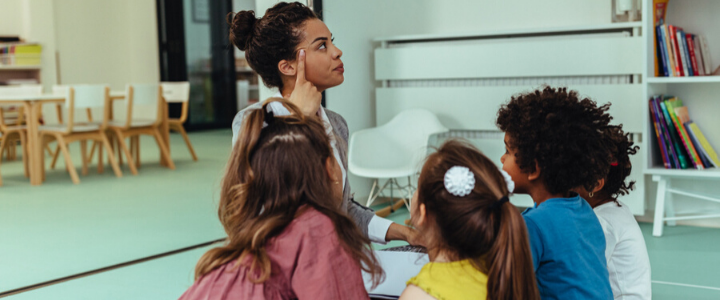In order to provide equitable outcomes for a growing diverse student population, it’s important that we truly examine our beliefs, actions, and instructional practices.
Culturally Responsive Teaching is more than simply celebrating diverse cultures or building strong relationships. It’s identifying our students’ varied perspectives and experiences in order to build bridges toward rigorous learning. It’s knowing yourself, your own assumptions and biases, and how these impact interactions with others.
If you are interested in learning strategies to interrupt systems of bias and inequity, and exploring methods for making learning more relevant and rigorous for students, this activity will serve as a pathway towards that and—a greater sense of self-awareness and a renewed focus on inclusivity and equity for all students.
Activity Objectives:
- To understand the origins of educational inequality and identify gaps in student achievement.
- To understand the impact educational inequities have on student experiences and the factors that contribute.
- To examine the factors that contribute to inequality and plan ways to mitigate contributing factors.
Steps and Talking Points:
- Begin by researching or sharing your school, your district, or national-level data on the achievement gap.
- Then ask yourself or discuss the following question: What causes the pervasive achievement gap?
- Jot down your ideas or brainstorm with colleagues – contemplate the reasons behind the decades-long, persistent gap.
Watch and Learn:
Schools & Social Inequality by Crash Course.
In this video, you’ll explore social inequalities in the US education system. You’ll look at variations in school funding and quality, the role of cultural capital, and some of the ways in which the American school system disadvantages minority student groups. After watching the video, jot down or discuss the following questions:
- How has your understanding of the achievement gap changed after watching the video?
- Which students in your school/district/community are experiencing achievement gaps?
- What specific gaps are students experiencing? Gaps in performance on tests? Gaps in access to key opportunities? Attainment gaps?
Debrief:
Reflect on ways to move forward from the thoughts/discussions that have been sparked with this activity.
- Can you gather your colleagues to develop a workgroup surrounding these topics?
- Can further discussions be introduced and facilitated with other stakeholders?
- Can you set a goal to address one or more of the achievement gap contributing factors?







